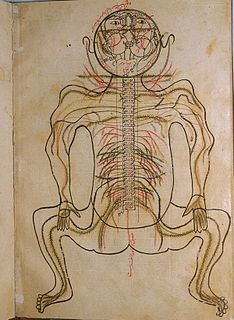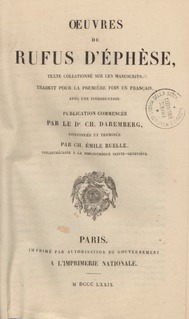Sources
For the manuscript now in Los Angeles, see A.Z. Iskandar, A Descriptive List of Arabic Manuscripts on Medicine and Science at the University of California, Los Angeles (Leiden: Brill, 1984), p. 82.
Abu al-Qasim al-Habib Neishaburi was a Persian physician from Khorasan who lived before 1750CE. His name indicates he was from Nishapur.
He is known to have written two Arabic treatises on Prophetic medicine. One is in a unique copy now at The National Library of Medicine, copied in 1792CE, and the other is preserved in a unique copy now in Los Angeles that was copied in 1750CE.
Therefore, the author must have been active before 1750CE. Since he cites amongst his authorities Ibn Shahin, who composed his major work in 1453CE, we know that Naysaburi must have been active after the mid-15th century.
Nothing else is known about this author.
For the manuscript now in Los Angeles, see A.Z. Iskandar, A Descriptive List of Arabic Manuscripts on Medicine and Science at the University of California, Los Angeles (Leiden: Brill, 1984), p. 82.
ʿAbd al-Laṭīf al-Baghdādī, short for Muwaffaq al-Dīn Muḥammad ʿAbd al-Laṭīf ibn Yūsuf al-Baghdādī, was a physician, philosopher, historian, Arabic grammarian and traveller, and one of the most voluminous writers of his time.

Gerard of Cremona was an Italian translator of scientific books from Arabic into Latin. He worked in Toledo, Kingdom of Castile and obtained the Arabic books in the libraries at Toledo. Some of the books had been originally written in Greek and, although well known in Byzantine Constantinople and Greece at the time, were unavailable in Greek or Latin in Western Europe. Gerard of Cremona is the most important translator among the Toledo School of Translators who invigorated Western medieval Europe in the twelfth century by transmitting the Arabs' and ancient Greeks' knowledge in astronomy, medicine and other sciences, by making the knowledge available in Latin. One of Gerard's most famous translations is of Ptolemy's Almagest from Arabic texts found in Toledo.

The House of Wisdom, also known as the Grand Library of Baghdad, refers to either a major Abbasid public academy and intellectual center in Baghdad or to a large private library belonging to the Abbasid Caliphs during the Islamic Golden Age. The House of Wisdom is the subject of an active dispute over its functions and existence as a formal academy, an issue complicated by a lack of physical evidence following the collapse of the Abbasid Caliphate and a reliance on corroboration of literary sources to construct a narrative. The House of Wisdom was founded either as a library for the collections of the Caliph Harun al-Rashid in the late 8th century or was a private collection created by Al-Mansur to house rare books and collections of poetry in both Arabic and Persian.

The Kitāb al-Taṣrīf, known in English as The Method of Medicine, is a 30-volume Arabic encyclopedia on medicine and surgery, written near the year 1000 by Abu al-Qasim al-Zahrawi (Abulcasis). It is available in translation. The Kitab al-Tasrif took al-Zahrawi over 50 years to complete. It contains information about a wide variety of illnesses, injuries, medical conditions, treatments, and surgical procedures. It describes over 200 different surgical instruments. Surgeons continued to rely on the Kitab al-Tasrif well into the 1700s; some of Al-Zahrawi’s surgical procedures are still being used to this very day. This book was read by medical students at major universities in Europe until the late 1800s.

The Secretum or Secreta Secretorum, also known as the Sirr al-Asrar, is a pseudo-Aristotelian treatise which purports to be a letter from Aristotle to his student Alexander the Great on an encyclopedic range of topics, including statecraft, ethics, physiognomy, astrology, alchemy, magic, and medicine. The earliest extant editions claim to be based on a 9th-century Arabic translation of a Syriac translation of the lost Greek original. Modern scholarship finds it likely to have been a 10th-century work composed in Arabic. Translated into Latin in the mid-12th century, it was influential among European intellectuals during the High Middle Ages.
Dunash ibn Tamim was a Jewish tenth century scholar, and a pioneer of scientific study among Arabic-speaking Jews. His Arabic name was أبو سهل Abu Sahl; his surname, according to an isolated statement of Moses ibn Ezra, was "Al-Shafalgi," perhaps after his (unknown) birthplace. Another name referring to him is Adonim.

Jamal al-Din Muhammad ibn Muhammad ibn Muhammad ibn Fakhr al-Din al-Razi, also written al-Aqsara'i, was a 14th-century Muslim Iranian physician. He became known as Aqsara'i because he moved to Aqsara region of what is now Turkey.

Muhammad ibn Yusuf al-Harawi was a Persian late 15th century physician from Herat, Safavid Iran, now part of Afghanistan.
Muḥammad ibn Yusuf al-Ilāqī was an eleventh-century Persian physician from Khorasan.
Jalal al-Din Muhammad al-Isfahani was a 19th-century Persian physician from Isfahan.

Manṣūr ibn Muḥammad ibn Aḥmad ibn Yūsuf Ibn Ilyās was a late 14th century and early 15th century Persian physician from Shiraz, Timurid Persia, commonly known for his publication of the colored atlas of the human body, Mansur’s Anatomy. It is important to know that al-Jurjani (1040–1136) published a book called "Zakhireye Khwarazmshahi" which Mansur could have copied the illustrations from his book.
Muhammad ibn Thalib ibn Abd Allah ibn Ni`mat Allah ibn Sadr ad-Din ibn Shaykh Baha' ad-Din ash-Shirazi was a 15th-century Persian physician from Shiraz, Iran.

Zakariyya' al-Qazwini, also known as Qazvini, born c. 1203 in Qazvin (Iran) and died 1283, was a Persian cosmographer and geographer of Arab ancestry.
Amin al-Din Rashid al-Din Vatvat was a 13th-century Persian physician.
Masʽud ibn Muhammad Sijzi was a Persian physician who lived before 1334CE in eastern Iran.

Ala-al-Din abu al-Hasan Ali ibn Abi-Hazm al-Qarshi al-Dimashqi, known as Ibn al-Nafis, was an Arab polymath whose areas of work included medicine, surgery, physiology, anatomy, biology, Islamic studies, jurisprudence, and philosophy. He is known for being the first to describe the pulmonary circulation of the blood. The work of Ibn al-Nafis regarding the right sided (pulmonary) circulation pre-dates the later work (1628) of William Harvey's De motu cordis. Both theories attempt to explain circulation. 2nd century Greek physician Galen's theory about the physiology of the circulatory system remained unchallenged until the works of Ibn al-Nafis, for which he has been described as "the father of circulatory physiology".

Islamic literature is literature written by Muslim people, influenced by an Islamic cultural perspective, or literature that portrays Islam. It can be written in any language and portray any country or region. It includes many literary forms including adabs, a non-fiction form of Islamic advice literature, and various fictional literary genres.

Rufus of Ephesus was a Greek physician and author who wrote treatises on dietetics, pathology, anatomy, gynaecology, and patient care. He was an admirer of Hippocrates, although he at times criticized or departed from that author's teachings. While several of his writings survive in full and have been critically edited, most are fragmentary and lack critical editions. His writings explore subjects often neglected by other authors, such as the treatment of slaves and the elderly. He was particularly influential in the East, and some of his works survive only in Arabic. His teachings emphasize the importance of anatomy and seek pragmatic approaches to diagnosis and treatment.
The Graeco-Arabic translation movement was a large, well-funded, and sustained effort responsible for translating a significant volume of secular Greek texts into Arabic. The translation movement took place in Baghdad from the mid-eighth century to the late tenth century.

The Birmingham Quran manuscript is a parchment on which two leaves of an early Quranic manuscript are written. In 2015 the manuscript, which is held by the University of Birmingham, was radiocarbon dated to between 568 and 645 CE. It is part of the Mingana Collection of Middle Eastern manuscripts, held by the university's Cadbury Research Library.